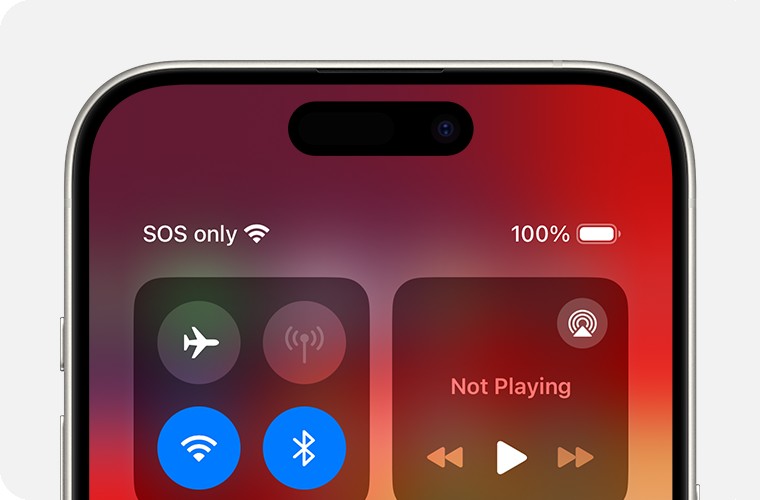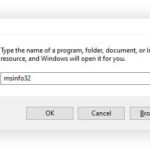Experiencing “SOS Only” on your iPhone can be concerning, leaving you disconnected from your cellular network while still allowing emergency calls. If you’re seeing “SOS” or “SOS only” in your iPhone status bar, or perhaps “No Service” or “Searching,” it indicates your device is struggling to connect to your cellular network. This guide will walk you through troubleshooting steps to help you restore your iPhone’s cellular connection and get rid of the SOS only mode.
Understanding SOS, No Service, and Searching on Your iPhone
When your iPhone displays “SOS” or “SOS only,” it means your device can make emergency calls through any available carrier networks, even if you’re not connected to your usual provider. This feature is currently available in regions like Australia, Canada, and the United States. However, it also signifies a disconnection from your regular cellular service, meaning you can’t make standard calls, send texts, or use cellular data.
“No Service” or “Searching” indicators similarly point to your iPhone’s inability to find a cellular network signal. These issues can arise due to various reasons, ranging from temporary network glitches to account-related problems or device settings.
For iPhones running iOS 18, Apple provides a diagnostic tool within the Apple Support app which can further pinpoint the cause of your connectivity issue. Consider downloading the app to utilize these advanced diagnostics if you’re running the latest iOS version.
Quick Fixes to Reconnect to Cellular Network
Before diving into more complex solutions, try these quick and simple steps that often resolve temporary connectivity problems and can help you fix SOS only on iPhone:
Toggle Airplane Mode
Airplane Mode is a handy feature to quickly reset your iPhone’s network connections.
- Open Settings on your iPhone.
- Turn on Airplane Mode. Wait for at least 15 seconds.
- Turn off Airplane Mode. Your iPhone will attempt to reconnect to the cellular network.
Restart Your iPhone
A simple restart can resolve many software-related glitches that might be causing the “SOS only” issue.
- For iPhones with Face ID: Press and hold the side button and either volume button until the power-off slider appears. Drag the slider, then wait 30 seconds for your device to turn off. To turn it back on, press and hold the side button until you see the Apple logo.
- For iPhones with a Home button: Press and hold the side (or top) button until the power-off slider appears. Drag the slider, then wait 30 seconds for your device to turn off. To turn it back on, press and hold the side (or top) button until you see the Apple logo.
Contacting Your Carrier for Service Issues
If the quick fixes don’t work, the problem might lie with your cellular carrier or your account. Contacting your carrier is a crucial step in troubleshooting “SOS only on iPhone” because they can verify several key aspects:
- Account Status: Ensure your account is active and in good standing. Suspended or inactive accounts will result in service disruptions.
- Network Coverage and Outages: Confirm you are in an area with cellular network coverage and if there are any reported outages in your location. Network issues are often temporary and carrier-specific.
- Device Block or Barring & Data Plan: Check that your iPhone isn’t blocked or barred from receiving cellular services, which can happen if it’s reported lost or stolen. Also, verify that your device is set up with the correct data plan to support cellular connectivity.
- IMEI Registration: Inquire if your local government requires IMEI registration, especially if you purchased your iPhone outside your current country or region. This is a requirement in some areas for using devices on local networks.
Remember, only your wireless carrier has access to your account details and can manage your cellular service.
Software and Settings Updates
Keeping your iPhone software and carrier settings up to date is essential for optimal performance and network compatibility, and can be a solution for how to fix SOS only on iPhone.
Update iOS or iPadOS
Ensure your iPhone is running the latest version of iOS. Software updates often include bug fixes and improvements that can resolve connectivity issues.
- Open Settings app.
- Tap General.
- Tap Software Update. If an update is available, download and install it.
Check for Carrier Settings Update
Carrier settings updates improve your iPhone’s ability to connect to your carrier’s network and support new features.
- Make sure your iPhone is connected to Wi-Fi.
- Go to Settings > General > About.
- If a carrier settings update is available, you’ll see a pop-up option to Update. Tap Update.
- To check your current carrier settings version, go to Settings > General > About and look next to Carrier.
It’s also important to update carrier settings if you insert a new SIM card into your iPhone.
Dual SIM iPhone Considerations
If you are using an iPhone with Dual SIM capability, ensure both cellular plans are correctly configured and active.
- Open Settings app.
- Tap Cellular.
- Tap on each cellular line you have and check if it’s turned on.
- If a line is off, turn it on. Then, check if your service is restored.
If you don’t see your cellular plan listed, contact your carrier to set up an eSIM or insert a physical SIM card. If you’re using a physical SIM, try removing and re-inserting it. Damaged or improperly fitted SIM cards can also cause issues, so consider requesting a new SIM card from your carrier if needed.
International Travel and Data Roaming
When traveling internationally, data roaming needs to be enabled to use cellular services outside your home network.
- Go to Settings, then tap Cellular or Cellular Data.
- Tap Cellular Data Options.
- Turn on Data Roaming.
3G Network Deprecation and Older iPhones
If you are using an older iPhone model such as iPhone 5s, iPhone 5c, or earlier, or an older iPad, and you see “No Service,” it might be related to the phasing out of 3G networks. Contact your carrier to discuss your options.
For iPhone 6 or later and iPad (3rd generation) or later, ensure LTE is enabled:
- Go to Settings > Cellular.
- Tap Cellular Data Options (for iPhone) or simply turn on LTE (for iPad).
If “No Service” persists after these steps on newer devices, contact your carrier for further assistance. iPhones and iPads supporting 5G are not impacted by the 3G network shutdown.
Get Help
Troubleshooting “SOS only” on iPhone involves systematically checking various potential causes, from simple restarts to carrier-related issues and software settings. By following these steps, you should be able to identify and resolve the problem, restoring your iPhone’s cellular connectivity. If you continue to experience issues after trying these solutions, reaching out to Apple Support or your cellular carrier for more specialized assistance is recommended.


